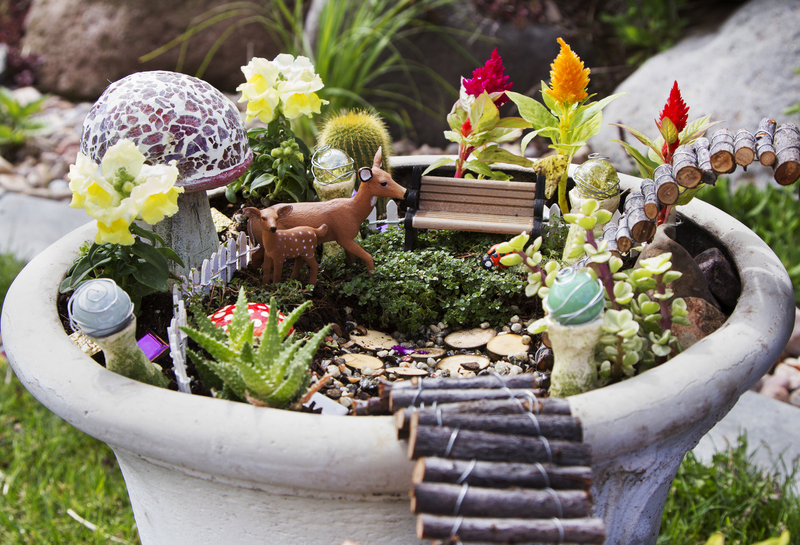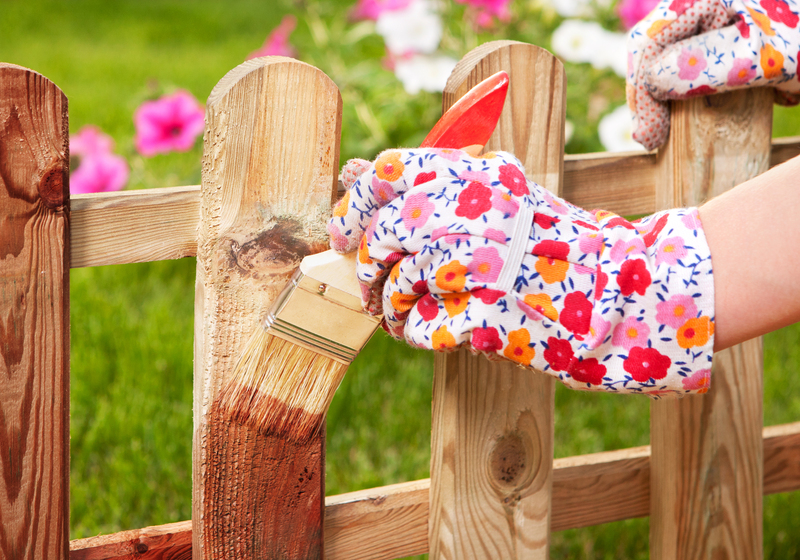Insider Tips for Exceptional Orchid Growth
Posted on 17/08/2025
Insider Tips for Exceptional Orchid Growth
Orchids are much-loved for their exquisite beauty, delicate petals, and versatility as houseplants. However, achieving exceptional orchid growth can seem mysterious to many enthusiasts. Whether you're a beginner or an experienced grower, understanding the best practices for thriving orchids can elevate your plant care to a new level. In this comprehensive guide, we reveal insider tips and expert techniques designed to help you cultivate healthy, vibrant orchids.

Understanding Your Orchid: Types, Needs & Growth Habits
Common Orchid Varieties for Home Growers
Before diving into the nitty-gritty of exceptional orchid cultivation, it's essential to identify the specific types of orchids you're growing. Popular varieties include:
- Phalaenopsis (Moth Orchid) - Known for its resilience and elegant blooms.
- Dendrobium - Appreciated for its vibrant flowers and diverse species.
- Cattleya - Favored by collectors for their scent and large blossoms.
- Oncidium - Recognized by their uniquely shaped and often fragrant flowers.
- Vanda - A choice for advanced growers seeking striking, high-maintenance blooms.
Understanding your orchid's variety is fundamental for tailoring care routines to ensure robust growth and prolific flowering.
Essentials of Orchid Care for Strong Growth
Choosing the Right Potting Mix
One of the critical secrets to exceptional orchid growth lies in the potting medium. Unlike most houseplants, orchids don't thrive in regular soil. They generally need a well-draining, aerated mix that mimics their natural epiphytic environment. Ideal orchid potting media includes:
- Bark chips (fir, pine, or cypress)
- Sphagnum moss for moisture-loving species
- Perlite or charcoal to improve drainage
- Coconut husk chips
- A mix of several components for customized water retention and aeration
Insider tip: Refresh the potting media every 1-2 years, as it decomposes and loses structure, which can lead to root rot and stunted growth.
Watering Techniques for Optimal Health
Overwatering is the most common cause of orchid failure. Understanding when and how to water is crucial for exceptional orchid cultivation:
- Check roots and media before watering; only water when the top one inch is dry.
- Use tepid, filtered, or rainwater whenever possible. Avoid water with high salts or chlorine.
- Water thoroughly, ensuring water drains out of the pot. Never let orchids sit in water.
- Reduce watering frequency during cooler months or when orchids are dormant.
Pro tip: Orchids with thicker roots, like Cattleyas, need less frequent watering compared to those with finer roots, such as Oncidiums.
Creating the Perfect Environment for Orchid Vigour
Lighting: The Key to Flowering Success
Light is a major determining factor in orchid health and flower production. The right amount and intensity of light encourage exceptional orchid growth and vigorous blooming:
- Phalaenopsis: Medium light; east or north-facing windows are ideal.
- Dendrobium & Cattleya: Bright, filtered light; south or west exposure with sheer curtain.
- Vanda: Maximum light; may require supplemental grow lights indoors.
Signs your orchid is getting the right light: Leaves appear light green (not dark green, which indicates too little light, nor yellow/red, which signifies too much).
Temperature & Humidity Management
Orchids flourish when day and night temperatures mimic their natural habitats. Mastering temperature and humidity is a hallmark of expert orchid growers.
- Phalaenopsis: Day 70-80?F (21-27?C), Night 60-70?F (16-21?C)
- Dendrobium: Slight drop at night is beneficial for bloom stimulation.
Humidity should ideally be between 40% to 60%. Use a humidity tray, room humidifier, or frequent misting to achieve these levels. Poor air circulation, however, can lead to fungal and bacterial issues; make sure your growing space is well-ventilated.
Feeding Strategies: Nutrition for Exceptional Orchid Growth
Choosing the Right Fertilizer
Orchids need specific nutrients to support growth and blossom formation. Opt for a balanced, water-soluble orchid fertilizer (20-20-20 or similar) unless your variety requires specialized feeding.
- Fertilizer frequency: "Weakly, weekly" is the golden rule--feed at one-quarter the recommended strength once a week.
- Flush the media: Once a month, water your orchid thoroughly to eliminate fertilizer and salt buildup.
- Bloom boosters: Use a fertilizer higher in phosphorus prior to and during the blooming phase to encourage larger and more vibrant flowers.
Remember: Overfeeding can burn delicate roots and produce limp, weak growth. It's better to underfeed than to overdo it.
Repotting for Renewed Vigour
One of the best-kept secrets for superior orchid growth is timely repotting. Signs your orchid needs repotting include:
- Roots growing over the pot's edge
- Potting media breaks down and retains too much moisture
- Stunted growth or absence of flowering
How to repot: Gently remove old media, trim away dead roots, and place your orchid into fresh, moist mix.
Orchid Maintenance: Pruning, Cleaning & Pest Control
Pruning for Prolific Blooming
Regular pruning and deadheading promote not just a tidy appearance, but also repeat blooming:
- After flowering, cut back spent flower spikes above a visible node to encourage secondary spikes (especially for Phalaenopsis).
- Trim yellow, dried, or damaged leaves and roots.
Tip: Always use sterilized tools to prevent the spread of disease.
Pest Management for Healthy Orchids
Orchids are vulnerable to pests such as scale, aphids, spider mites, and mealybugs. Early intervention is crucial for exceptional orchid health:
- Inspect new plants before introducing them to your collection.
- Wipe leaves with a damp, soft cloth regularly to deter pests.
- Use insecticidal soap or horticultural oils for infestations; avoid strong chemical pesticides.
- Increase air movement to discourage fungal issues.
Expert advice: Isolate and treat infested plants promptly to protect nearby orchids.
Advanced Insider Tips for Exceptional Orchid Growth
Acclimatizing Orchids to Indoor Environments
For optimal indoor orchid performance, gradually introduce your plant to new lighting and temperature regimes. Avoid abrupt shifts, as orchids are sensitive to environmental change.
Seasonal Orchid Care Adjustments
Orchids require a shift in care with the changing seasons. In winter, reduce watering and fertilizing; in spring and summer, increase light and humidity. Always pay attention to specific signals from your orchid, such as leaf color and root health, to fine-tune your approach.
Encouraging Flower Re-blooming
Getting orchids to re-bloom is an accomplishment that sets expert growers apart. Key techniques include:
- Temperature drop: For many varieties, a lower nighttime temperature for a couple of weeks can trigger spikes.
- Consistent feeding: Support emerging spikes with continued balanced nutrients.
- Proper rest period: Some species, like Dendrobiums, require a dry period to initiate the next bloom cycle.
Common Orchid Growth Mistakes & How to Avoid Them
- Overwatering or underwatering: Both can lead to root loss and stunted growth.
- Incorrect light: Not enough or too much light results in weak blooming or leaf burn.
- Wrong pot size: Too big leads to soggy media; orchids like to be snug in their pots.
- No air movement: Stagnant air encourages pests and rot.
- Ignoring root health: Healthy, green or silvery roots signal a thriving plant.
By avoiding these pitfalls, your orchid growing experience will be more rewarding, and your plants will display exceptional vitality.

Frequently Asked Questions about Orchid Growth
-
How often should I water my orchid?
Water when the potting mix is nearly dry, generally every 5-10 days. Overwatering is more dangerous than underwatering. -
How do I get my orchid to flower again?
Encourage reblooming by providing a brief cool period and ensuring adequate light and nutrition. -
Should I mist my orchids?
Misting helps increase humidity, especially in dry conditions, but avoid wetting the crown to prevent rot. -
When should I repot my orchid?
Every 1-2 years, when the mix decomposes or roots crowd the pot.
Conclusion: Mastering the Art of Exceptional Orchid Growth
The journey to exceptional orchid growth is filled with learning, patience, and attention to detail. By applying these insider tips--from understanding your orchid's specific needs and perfecting watering routines, to providing just the right balance of light, air, humidity, and nutrition--you set the stage for year-round displays of stunning blooms. Remember that consistency in care and observation is your greatest tool. With dedication, your orchids will reward you with vibrant, long-lasting flowers and robust foliage, making your indoor garden a living masterpiece. Happy growing!



